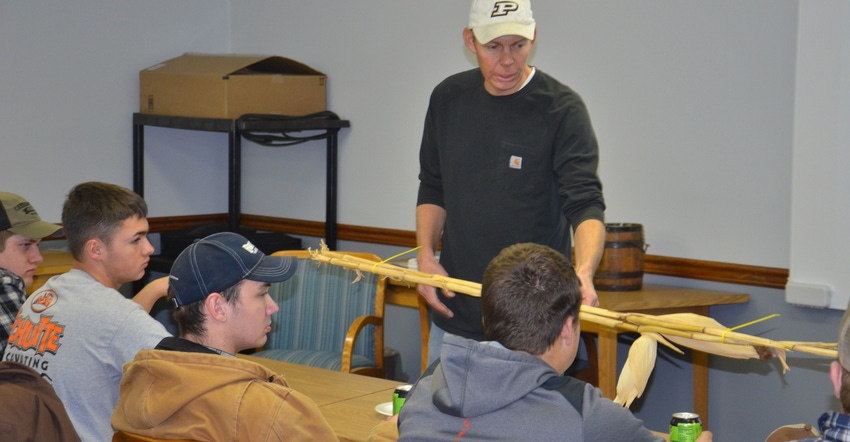
Good things can happen when you step outside the box. Joel Wahlman, superintendent of the Southeast Purdue Agricultural Center at Butlerville, Ind., and Alex Helms, his assistant, hit upon a novel idea around this time last year.
A prime block of research plots wasn’t scheduled for any trials for 2017. Why not invite local FFA chapters to come up with recipes for growing corn and include each recipe as a treatment in a replicated trial in that space?
“We decided to call it the FFA Profit Plots program, because we wanted to emphasize producing the most profit per acre, not just the most yield,” Wahlman says. “We hoped that by involving students and allowing them to come up with their own plans for how to treat their plot, we could help them learn about corn production, marketing and research all at the same time.”
Four FFA chapters took SEPAC up on the offer: Batesville FFA, North Decatur FFA, South Decatur FFA and South Ripley FFA. Members of all four chapters and their advisors attended learning sessions at SEPAC, and put together strategies for growing and marketing corn.
The project was highlighted during the SEPAC field day in August. Participants explained what they were doing in their plots and what they had learned so far.
Harvest of knowledge
Wahlman and Helms invited everyone back for a wrapup after harvest.
“We wanted to review what we ourselves learned from doing this, and see what the kids thought they learned,” Wahlman says. “We saw a nutrient deficiency problem that we didn’t expect to see, which was likely related to one of the fertilizer strategies. We also pointed out to them why we do replications. Some recipes did better in certain reps than other reps.”
Wahlman even introduced students to basic statistics at the wrapup session, explaining the reason trials need to be repeated before you can be sure differences were due to what you did and not just chance. “We wanted them to understand that even if there was a pretty big yield difference, we might not be confident that it was due to what the students recommended and not just some other factor, including different soil types. Next time it might come out differently,” he says.
Batesville FFA ended up producing the most profit per acre and took home a unique traveling trophy. “Plans are to keep doing this as long as the FFA chapters are interested,” Wahlman says.
Participants got an extra surprise at the wrapup session. Belinda Puetz of CountryMark presented each FFA chapter with a check for participating. CountryMark also gave a check to SEPAC to help cover costs involved in carrying out the program.
For years, CountryMark and Indiana Prairie Farmer have co-sponsored essay contests for youth and adult readers. This year’s contest asked for farm management ideas, but didn’t attract any entries.
“This was exactly the kind of out-of-the-box management idea we were looking for, so we decided to award the money to the chapters and SEPAC,” Puetz says.
About the Author(s)
You May Also Like




